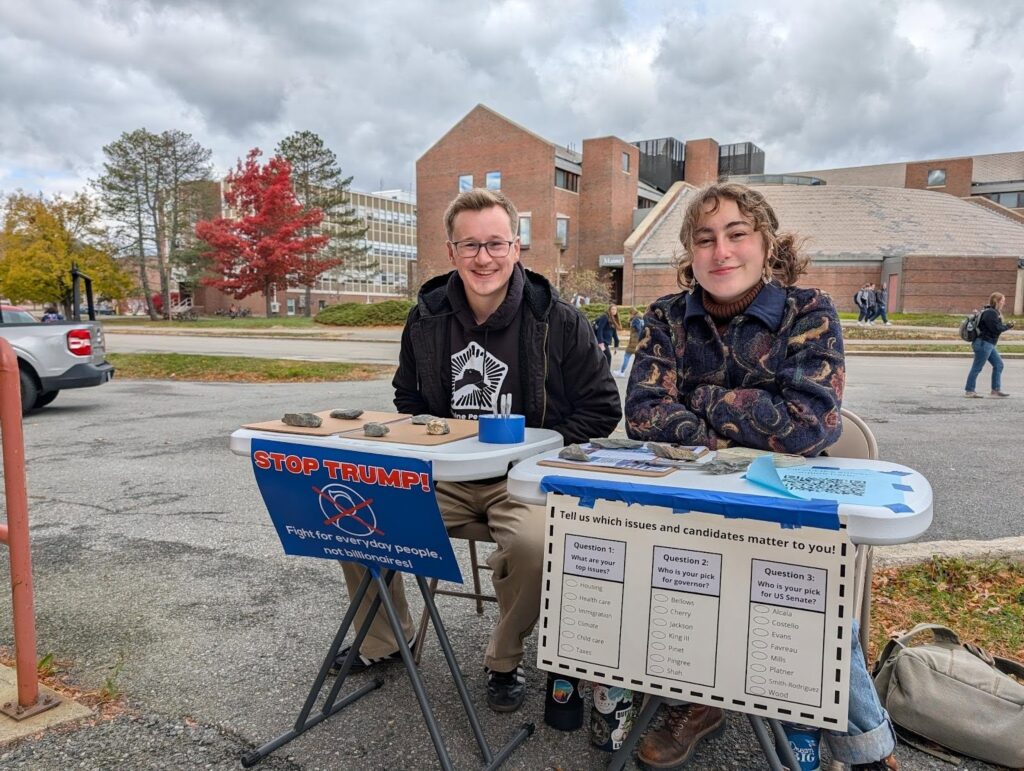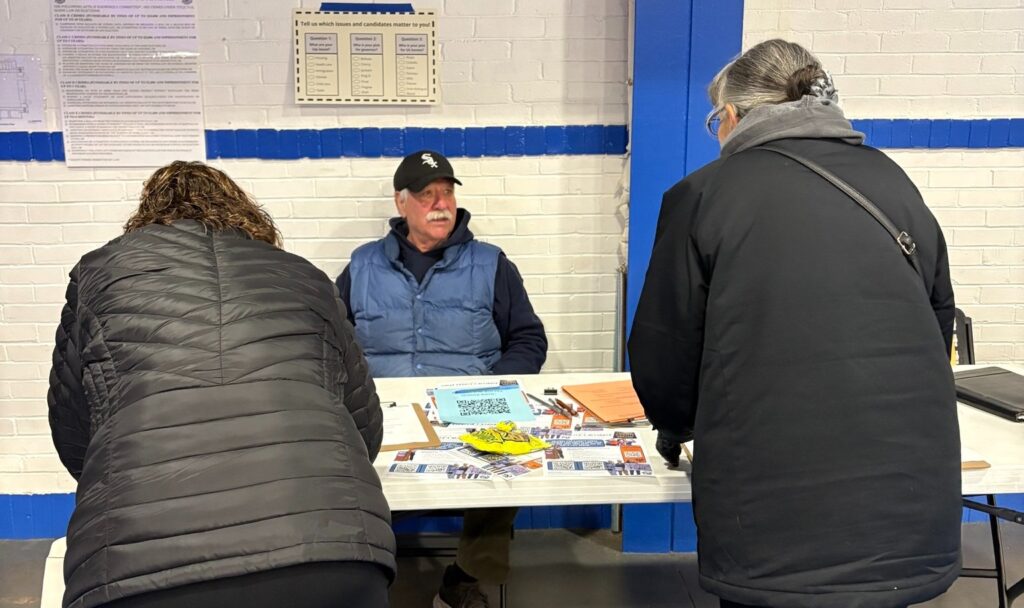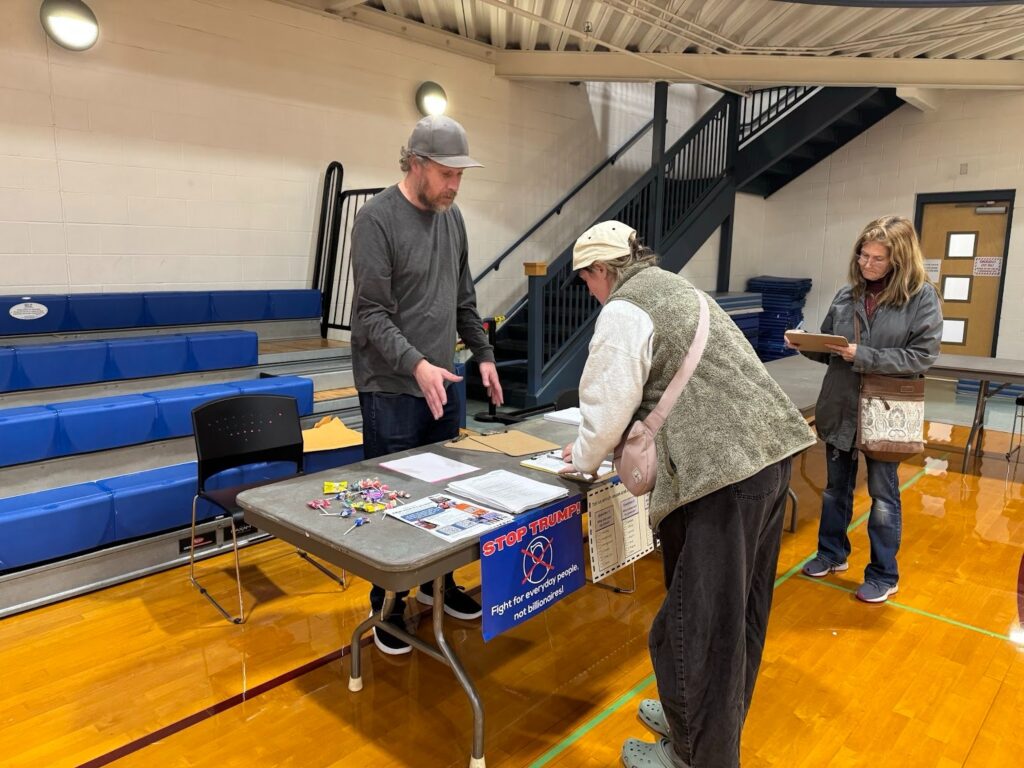It’s a crisp fall day in Augusta and Bangor, and Maine People’s Alliance’s members are ready, clipboards in hand.

Just as they do every Election Day, some of MPA’s 32,000 members fan out across the state to more than 80 polling places, ready to help answer voters’ questions and to hear what matters most to them.
This scene is familiar to People’s Action members and member organizations. For decades, we’ve been talking with our neighbors, armed only with clipboards.
Yet for MPA’s Jennie Pirkl, the clipboard is the start of a journey: it’s about building a relationship that grows over time, so people can organize themselves and create positive change in their communities.
“The thing for me is, how can we better set up our membership so we can grow our movement?” said Pirkl. “How can we keep communicating with these folks, so many of them go from a potential activist, which is what they are right now, to being a leader?”

Good organizers know how to build relationships, but insights from one-on-one conversations are hard to collect and quantify, which is what organizations like MPA and People’s Action need to do if they want to build power at state and national levels.
Then there’s all that paper.
”We’ve got to get all this data from these pieces of paper into the database,” said Pirkl. “We’re constantly learning.”

This is why MPA has partnered with People’s Action’s data team to reimagine their approach to gathering data and build a robust back end that can turn all of this information into pathways to power.
For every powerbuilding organization, the key to success is to create a ladder of engagement, with propositions that motivate someone to sign a petition, then attend a meeting, and move up the ladder to become committed participants who join committees, speak out in public, and donate.
“We’re going to get all this data entered in the next two weeks, and then send them all an email, text people who gave us their phone numbers, and we’re gonna just, like, introduce them to MPA,” said Pirkl. “They all want to stop Trump. Here’s the next thing they can do.”

Building a meaningful ladder of engagement takes a lot of local knowledge, and varies from place to place. You have to be a trusted community member to even start these conversations, then move from step to step. Yet because these ladders develop organically within each organization, they can be difficult to compare or consolidate. That’s where better data comes in.
“Before, the only metric that you were looking at for progress was like, ‘Okay, did the list get bigger?’” said Challa. “By actually more deeply integrating and understanding the real objective of building power, we were able to then parse it out and build a dashboard to showcase growth of power.”
Good data that can be easily understood and compared makes the whole process more efficient, and more effective.
“Without good data and a good system for being able to get back in touch with two to three thousand people,” says Pirkl, “we can just lose that momentum.”

With help from People’s Action, MPA transitioned from the data tool it had used for years, CiviCRM, to a new suite of tools, which includes Action Builder and Action Network, and a simplified ladder of engagement that is now shared with organizations across the network. This more effective combination of back-end tools makes it easier for organizations to more quickly understand and take action to serve their members’ needs.
“”We’re building a dashboard, so we can pull information from ActionBuilder and see it all in one spot,” says Pirkl. “I can give this to my directors, and now have a place for my organizers and canvass staff to see progress to goal on activities, like how many actions have people taken this year, along with some bigger numbers so they don’t have to try and pull it every time.”
Over the course of 2024, ten groups joined the new Measuring Power and Building Impacts Cohort, which meets monthly to establish and implement a shared set of data practices for powerbuilding. This is complemented by an additional Data Cohort, which hosts open meetings every month to support data organizers from across the network.
For Challa, adopting a shared set of data tools, best practices and ladder of engagement will make every People’s Action member group more powerful, as it will become far easier to quickly evaluate how they are growing and becoming more effective.
“That created this positive feedback loop, where organizers were like, ‘I want an iPad so data’s entered right into the CRM. Then I can mark their power level, and go and do their one-on-one and everything, right in the system. And the system is tracking their progress; it’s showing up on their dashboard.”
Being able to quantify effectiveness in this way is a major step forward for powerbuilding organizations, and is part of People’s Action’s commitment to help its member groups double their base of members by adopting the most effective techniques of community organizing.
The Measuring Power and Building Impacts initiative will continue into 2026, with opportunities for more organizations to get involved.
“In organizing, we have all these tried and true theories, which are stories we’ve been told for years, or things we just believe are right about organizing,” said Pirkl. “What we’re trying to do is track enough data so that we can back that up, and say ‘This isn’t just a theory – we actually have numbers that say this works.”